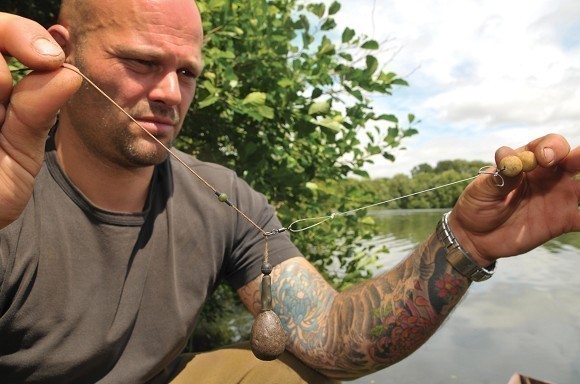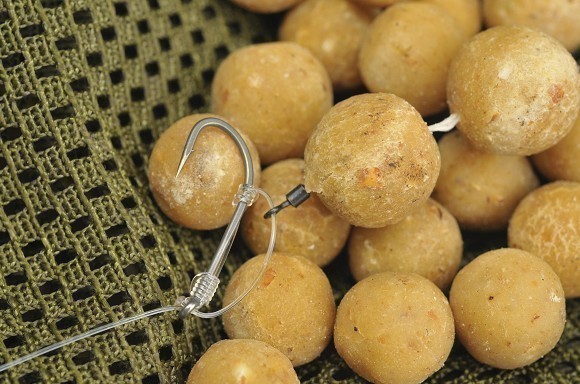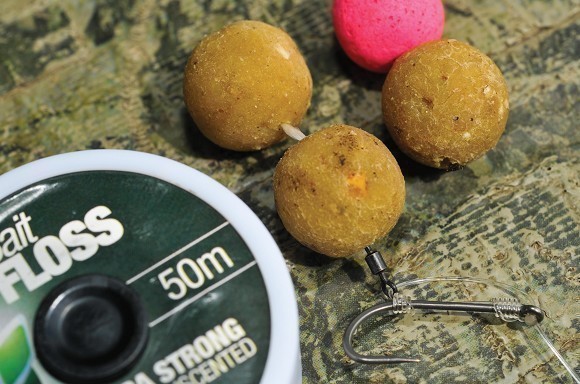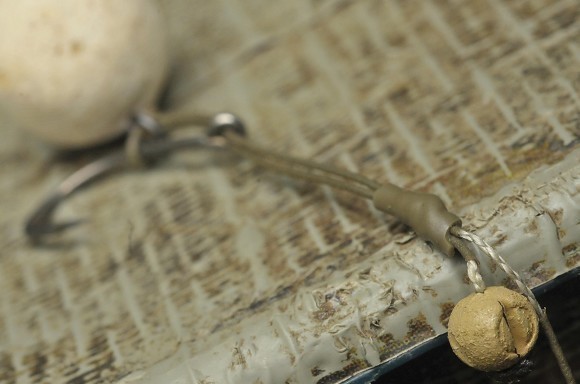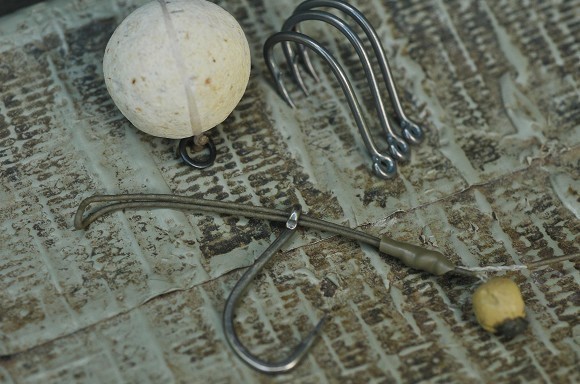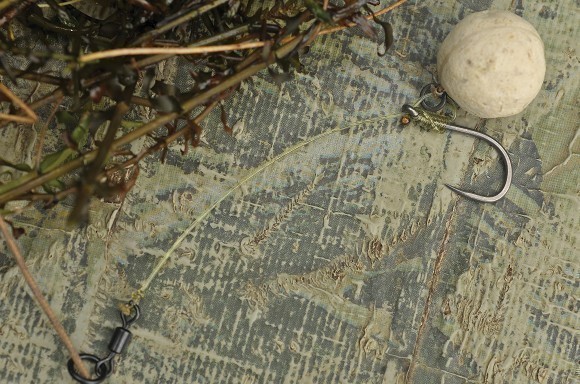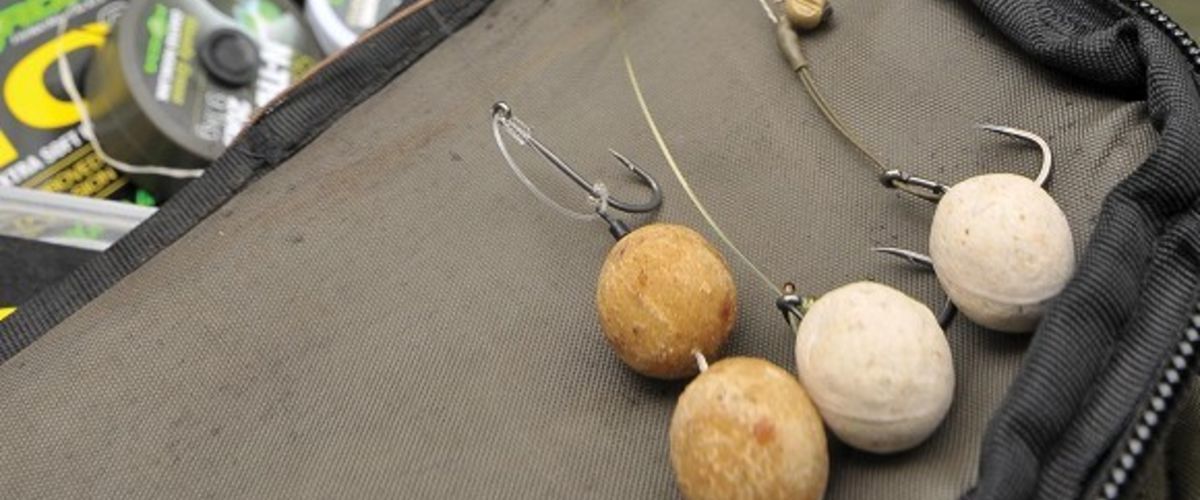
Oz Holness: My favourite three rigs...
We get technical with the captor of the mighty Burghfield common, Oz Holness
Oz, what are your main concerns when it comes to the type of rigs that you use?
Firstly, bait and hook separation is incredibly important, along with the sharpness of the hook. The travel that is engineered into the rig and the separation of the hook and bait once in the mouth also carry great weight for me.
That goes for bottom baits, pop-ups – everything?
Yeah. There are numerous aspects of the rig that become important and need to come into play, but the number one point is the contact point and the way that the hook acts when it’s either picked up or sucked in.
Tell us why you prefer to use a pop-up for most of your fishing?
Well, this has come about over many years of fishing. I feel that the hooking arrangement of a pop-up rig, with the hook held up off the bottom, below the bait and at the prime-hooking angle, is the most efficient way of getting as many hook-ups as possible.
So, the next thing to consider is making that rig and bait accessible to the fish at all times?
Absolutely, yes. My main consideration these days is that the time I’ve got is used as effectively as possible. Nowadays, for me to use a bottom bait rig, I have to have no doubt in my mind as to the cleanliness of the bottom that I’m fishing. For me to be happy to present a bottom bait on a spot, my lead has to slide across the spot like it’s smooth as glass. Any debris could hinder the travel of the rig into the carp’s mouth, so it has to be spotless!
That is borne out of my own fishing experience and everyone feels the bottom in a different way and understands different things from what they feel through their rod. However, from my boating experience, seeing spots from above and realising that what I’m fishing over is nothing like what I had imagined, has made me think very hard subsequently about what I’m using over such spots. If there is any doubt in my mind, then I’ll be using a presentation that allows me to fish on top of that debris or weed, rather than among it.
So tell us what those presentations are.
Well, if I’m gathering a small amount of debris but my spot is still fairly firm, then I’ll use a boom-section pop-up, which is the Multi Rig. Generally that is an acceptable presentation over weed and debris, but I’m still talking about finding a nice spot on which the lead ‘donks’ down nicely and from which I’m not picking up too much weed.
Do you use your notched, sampling lead to find out how clean the spot is?
Yeah, there are a couple of different methods that I use. One would be the notched lead and secondly I carry a little trimmed-down treble hook with the points snipped off. I attach that to the end of the rig and cast around and generally you pick up everything that’s out there.
Would you need the trebles to come back with absolutely nothing on it to use the bottom bait?
Yeah, I don’t want anything out there at all. It has to be clean silt or fine sand with no big lumps of stone or gravel. I need that rig travel to be perfect when a fish wants to suck the rig in.
Sum up what levels of debris you’re happy to use the Multi Rig over and when you would switch to your second pop-up presentation, the Chod.
I’m happy to use the Multi Rig over short Canadian, small amounts of old silkweed and silt. As soon as I’m getting soft drops into sketchy weed I will employ the Chod Rig to make sure that the presentation is perfect. Obviously the longer that you fish on a lake, the more that you can create your own clear areas with bait. What was an area that I’d only have fished a pop-up over could be made clean enough to use a bottom bait over.
Is being able to use a bottom bait a tactical advantage?
Not necessarily, no. The hook holds with a pop-up are nearly always much more positive than with a bottom bait. You
tend to hook fish in the middle of the bottom lip, which is the safest area for them and for you. The mechanics of the pop-up allows everything to work better, rather than relying on the fish tightening the link, like you do with a bottom bait. You can, even with a flip-and-turn bottom bait rig, get more hook holds in the scissors which does cause more damage.
Let’s move onto the mechanics of the bottom bait rig that you’re showing in this feature. How did it come about?
A couple of different things conspired to bring this rig into my armoury. I like a rig that can reset itself if disturbed by nuisance fish or ejected by a carp. We all know how many times that we’re getting done out there but we can try to bring things down to an acceptable level. However, there are times when that rig is going to get moved about. When big carp are feeding in the area of your rig, the water displacement is huge and your rig will get moved around. Therefore, I want to use a rig that is going to be presented correctly for as much of the time that it’s in the water as possible.
Does that means stiffer materials?
Slightly stiffer materials, generally. I’ve played about numerous times with long Hairs and Hairs that exit from the back of the eye but too often when using them I’ve had single bleeps and reeled in to find the Hair tangled around the shank. For my fishing I’m not going to accept that. I know that there are hundreds of people who get on with those rigs and if they’re working for you don’t change them, but there are questions to be asked about every rig. Can it be improved? Can you up your catch-rate? I’ve taken things to a level with this rig where I’m happy with what I’m doing. Once you are happy with what you are doing, that’s a major part of the equation dealt with and you can concentrate on other aspects of your approach.
Let’s take a look at your stiff bottom bait rig in detail then. You place a great deal of importance on having that great big loop at the swivel end?
Yes, there’s a lot of travel there. When the rig is picked up, the hook can spin into the best position because of that loop. That little swivel on the ‘D’ works towards that same result too. I used to use a rig that was very similar to this one with a semi-buoyant snowman set-up and a rig ring on the ‘D’. If you twist the bait with the ring on, it can twist the hook out of prime position. With the micro swivel and the big loop at the lead end, you are giving yourself the best chance of letting the hook spin into position and securing a good hook hold.
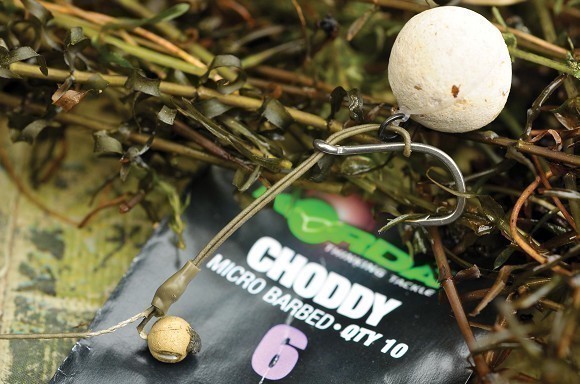 The Multi Rig practically guarantees immense hook holds and Oz uses it for 70 to 80 per cent of his fishing
The Multi Rig practically guarantees immense hook holds and Oz uses it for 70 to 80 per cent of his fishingHow important is the angle of the stiff material as it exits the eye in getting the hook into the right position?
The extended ‘D’ which goes up to the barb of the hook creates huge separation, along with the angle created by the slightly in-turned eye and stiff material make the hook more likely to drop into that prime position, and the swivels let it happen.
Is the way that you mount the two baits important?
Well, I always had the baits together in the past. Over the years, I decided that the more awkward the shape of the hookbait, the more difficult that they’ll find it to eject. I like that little bit of separation between the baits too. Actually, I find that I pick up a lot fewer tench on this rig than I do on the pop-up rigs. It’s a bit of a brutal rig, but that’s how I designed it – to be a big-carp rig.
I see you use helicopter rigs but how much travel do you allow between the beads for your bottom bait rigs?
About 1cm of travel, just to allow the lead section to settle if the lead does plug. I give the Multi Rig two- or three-inches, if not more.
Can you talk us through the way that your baiting situation would change between the three rigs?
Yeah, sure. I’d generally be fishing the bottom bait rig over a tight scattering of boilies on an area that has been cleaned and baited over time. I’ll use the Multi Rig over a scattering of say, half-a-pound of bait that I’ve introduced with the throwing stick over an area, rather than a concentrated spot. If I’m casting onto weedy areas or areas that I don’t know, I’ll put the Chod Rig on. I set the stop at the top of the leader so it can slide all the way up. Once the rig is out there, I ever so carefully sink the line; there’s no point in really pulling the line down hard because you could ruin what you set out to achieve with the Chod.
What percentage of fishing time would you say that you use the three rigs for?
I’d probably say that the Multi Rig caters for the greatest chunk of my fishing. I’ve caught a huge amount of fish using that rig. I tend to get incredibly good hook holds and I have a lot of faith in the presentation and the way it sits. It allows you to change your hook on a regular basis too.
The bottom bait rig comes into play after I’ve been on the lake for a period of time, working areas. As such, it plays much less of a role in my angling. I rely on the Chod if I’m turning up to fish an area that I don’t know. If I get on fish first thing in the morning and there is someone near me, I don’t want to mess up their chances, or mine, by casting around, so two casts with light leads can often get you a stealthy bite.
I’d say the Multi Rig is used for 70 to 80 per cent of my fishing and the other two pick-up the rest. If I’m lucky enough to find myself in a swim that I’m baiting and getting left alone in, then the bottom bait rig will inevitably come into play.
You mentioned a staggering statistic earlier, about your hooked-to-landed ratio!
Yeah, out of 84 fish hooked, I landed 82 of them a couple of years ago! I had a similar situation years ago on a very weedy water using the Longshank X hooks. They might not be the most fashionable but my God are they effective! For my angling, they’ve made a real difference. I know that a lot of guys love the beaked pointed hooks, but they don’t convert as many pick-ups into takes as possible and the Longshanks give me the best ratio that I can achieve with a bottom bait rig.





